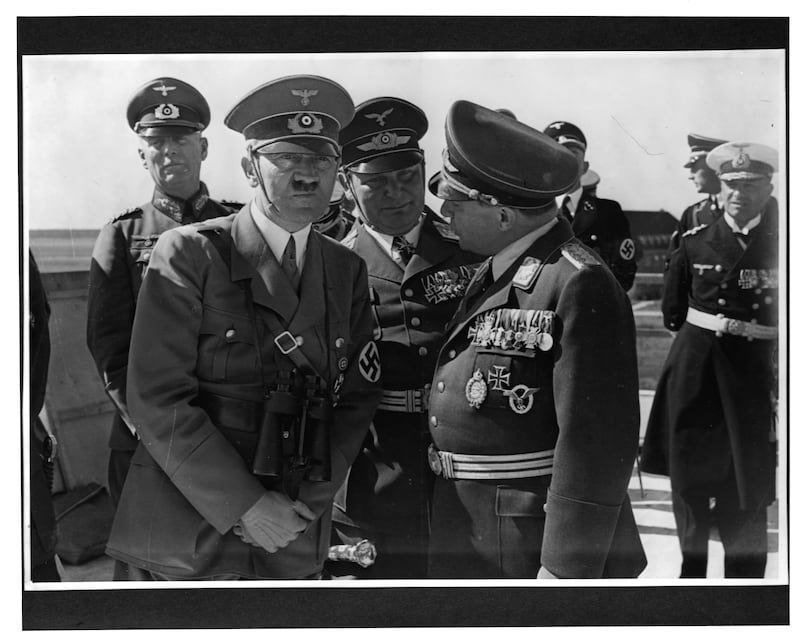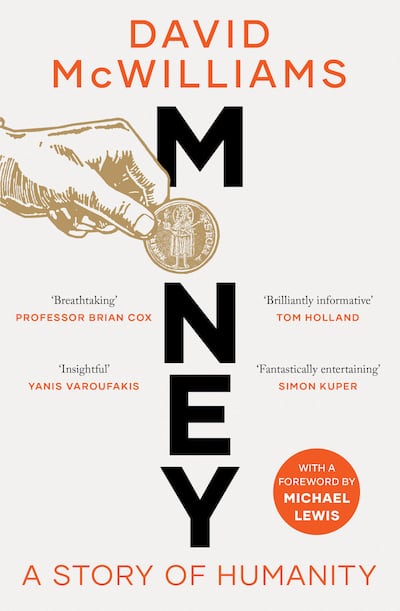On an August evening in 1943, Salomon “Sally” Smolianof, once a fine portrait painter as well as a Weimar Berlin nightclub operator, found himself in the hell of Sachsenhausen concentration camp. Years before, using nightclubs to launder cash, Smolianof – a refugee from Odessa – had found his true vocation: forgery. His painter’s hands and exquisite attention to detail were rewarded in the counterfeiting game.
In the 1920s, he had been arrested in Amsterdam for distributing fake English £50 notes. After serving a short sentence he made it back to Berlin, just in time for a bonanza in the forgery business. After the anti-Semitic violence of Kristallnacht in November 1938, as the monstrosity of the Nazi regime became apparent, Jewish people were desperate to flee Germany and paid Salomon (Jewish himself) for fake passports and exit visas. As his opportunities for legitimate work dried up with every fresh anti-Semitic restriction, he honed his forgery craft. The forgeries had to be aesthetically perfect copies: forging documents, like printing money, is a game of cat and mouse between the legitimate printers and the enterprising counterfeiter. Official designers embedded security tricks within documents to protect against the fraudster. To be an expert forger, having a delicate artistic hand wasn’t enough; he needed to master engineering, engraving, metalwork, moulding and pantography to replicate intricate designs.
The law eventually caught up with Smolianof again and he spent four years mining rocks in the slave labour camp of Mauthausen, surviving by drawing perfect (and flattering) portraits of his Nazi guards. As both a Jew and a convicted criminal, Salomon’s chances of survival weren’t great, but in 1943 he received a last-ditch reprieve. He was moved from the Austrian camp to Sachsenhausen, near Berlin. His mission? To break the Bank of England.
The concentration-camp forgers printed a total of £134,610,810, which amounted to four out of every 10 pounds then in circulation or about £7 billion in today’s money
Hitler understood what happens when money loses value and planned to drop millions of pounds all over Britain at the height of the second World War. He lived through the hyperinflation of the Weimar Republic and was aware that money is a weapon like no other. He understood the phenomenal power of money: undermine money and you undermine the fabric of society. The plan for the Luftwaffe to drop millions of banknotes over Britain was top secret, only known by a few senior Nazis. While some honest subjects of the king might go to the authorities, Hitler worked on the basis that most British folk would stuff a few notes under the mattress. He would enlist the people Napoleon famously dismissed as a money-obsessed “nation of shopkeepers” against themselves. With this counterfeit money in circulation all over the country, inflation would rip through the system, particularly as so much of Britain’s economic resources were directed at the war effort. Hitler hoped that the previously quiet and obedient British would experience a fire-in-the-theatre moment. They’d freak out and the ensuing chaos would upend their Blitz spirit, compromising the war effort.
If he couldn’t beat Britain with bombs, he’d beat it with money.
The Counterfeiters
Prisoner 93594, Smolianof, had a reputation that preceded him. In a bizarre quirk of fate, one that saved his life, an SS officer called Hans Krueger, who had previously arrested Smolianof as part of a criminal crackdown in Berlin, was put in charge of Hitler’s mass forgery scheme. Krueger, the Nazi, knew he needed Smolianof, the Jew. He found him languishing at Mauthausen and brought him to Sachsenhausen. Smolianof was to lead a motley crew of 142 Jewish specialists extracted from the concentration camps of the Third Reich. These men, who came from all over central Europe, had once been civilian printers, dyers, fine artists, engineers, engravers, metalworkers, mathematicians and photographers. The printworks in blocks 18 and 19 were shut off from the rest of the camp and no contact was allowed between the counterfeiters and the general camp population. Smolianof’s life, and those of the rest of the team, depended on figuring out what material the English were using for their banknotes.
Germany’s bouts of hyperinflation in the early 1920s meant that German currency was printed on whatever paper could be sourced. When billions of worthless marks are being printed, who cares about the quality of the paper? But the Bank of England was a different story. Sterling, the global reserve currency for almost a century, wasn’t printed on any old flimsy paper. Earlier forgers suspected it was printed on material made from a type of reed that only grew in the British colony of Malaya. There was something different about the texture of the English note. After relentless testing and tearing-up of real English notes, the counterfeiters twigged that the English were using rags from old clothing that had been pulped. With this knowledge, their operation could begin. Initially, the secret workshop made limited amounts of £5 notes. These prototypes needed to be tested, and where better to test the forgeries than at the Bank of England itself?

A German “industrialist” presented himself at a Swiss bank in Zurich claiming he had received some English notes on the black market and asked the bank to vouch for their legitimacy. The Swiss officials went to work with magnifying glasses and high-powered lamps. After careful examination, they declared the notes legitimate. The “industrialist” doubled his bluff and – to be completely sure – asked the Swiss bankers if they’d telegram the Bank of England to double-check the serial numbers and dates of issue. The Bank of England confirmed that the notes were original. Krueger was elated – as was his boss, Heinrich Himmler, head of the SS. The counterfeiters’ printing presses went into overdrive.
The realisation of Hitler’s plan to flood Britain with fake notes, forgeries so brilliant that not even the Bank of England could distinguish them from real ones, was mere months away. The concentration-camp forgers printed a total of £134,610,810, which amounted to four out of every 10 pounds then in circulation or about £7 billion in today’s money. The original plan was for German bombers to drop the notes over Britain, but by 1943, the war situation had deteriorated for Germany, and the Luftwaffe could no longer provide the planes.
Undeterred, the SS had other plans. Germany at this stage was running out of hard currency. As it was the global reserve currency, the SS could use the forged sterling to buy much needed war materials and in the process line their own pockets. Sachsenhausen’s brilliant forgeries infiltrated the global money supply via a network of middlemen who laundered the cash for Berlin. The dying months of the Nazi regime led to a black market in passports, visas and new identities, and a thriving market in stolen goods also emerged. Like various cryptocurrencies today, the fake money found a dark market. The Sachsenhausen notes were deployed to bribe officials for fake documents given to Nazis fleeing Europe for Argentina. Reports to the Bank of England that lots of sterling notes were being used by Nazis aroused suspicion, not least the fact that the ransom for the kidnapped Mussolini was paid for in counterfeited sterling. At the end of the war, the Bank of England oversaw the destruction of these forged notes, but so worried was the British government about the quality of the forgeries that it retired all its old £5 notes and introduced an entirely new batch. Just think what might have happened had Hitler’s money fallen from the heavens in 1943.
[ Man who tried to kill Hitler remembered by Irish relativesOpens in new window ]
The Monetary World
Money can be more powerful than religion, ideology or even armies. Mess with money and you mess with far more than the price system, inflation and economics – you mess with people’s heads. The story of Hitler’s forgery illuminates the power of money. The dictator, a demonic observer of psychology, understood human frailty, crowd dynamics and the depths to which people can descend.
Today, whether we like it or not, our entire world revolves around money – a universal language understood by rich investors living in high-tech Silicon Valley and struggling rickshaw drivers in New Delhi. People living thousands of miles apart, who don’t understand each other’s language or customs, understand money and speak to each other through it. Money is a force that dictates the flow of people, goods and ideas around the globe. Our efforts and talents are assessed by it; so too is the future. One of the earliest characteristics of money was putting today’s price on tomorrow. What is the rate of interest other than the price of time, expressed by money? When you take out a 30-year mortgage, although you don’t necessarily stop to think about it, you are painting a picture of who you are going to be and what your circumstances might be in 30 years’ time. In fact, you are imagining your future through money.
Money defines the relationship between worker and employer, buyer and seller, merchant and producer. But not only that: it also defines the bond between the governed and the governor, the state and the citizen. Money unlocks pleasure, puts a price on desire, art and creativity. It motivates us to strive, achieve, invent and take risks. Money also brings out humanity’s darker side, invoking greed, envy, hatred, violence and, of course, colonialism, which was so often driven by the prospect of vast financial gain. Money is complex because humans are complex.
Money motivates us and releases human energy, and what we do with the energy once we have it is up to us. Some want to spread the possibilities of money around, others want to hoard it for themselves. Money doesn’t impose on human morals; it amplifies them. If a person believes greed is good, they will behave accordingly with money. If they believe in equality and human rights, they may use money to achieve these objectives. The point is that we imagine money into being, money changes as we change, and money changes us.
Money is an ingenious technology that humans invented to help us negotiate an increasingly complex world. Imagining money as a tool or a technology is not how we usually think about it. It’s not that we don’t think about money; we do, and probably more than we’d like to. We need money to live and, because of this urgency, we rarely have the luxury of thinking about money in any other way. If you don’t have enough cash, you worry about how you might get more. If you have loads of it, you worry about making sure you don’t lose it. Most of us would like a bit more money, and if we could figure out an easy way of getting it, we’d probably go for that option. Money buys freedom: the essential promise which makes it so attractive is that, armed with money, you can change your world by gaining more control over your life.
Plutophytes
Given money’s central role in our lives, we rarely think more conceptually about it. We don’t stop to ask ourselves relatively simple questions such as: What is money? Where does it come from? Can it run out? Can we generate more of it? Maybe this absence of conceptual questioning is a measure of the true success of money. As long as it’s flowing, making the world go around, we are happy for money to exist without going into the details or how it came to be.

The first evidence of organised money comes from the Sumerian civilisation about 5,000 years ago and in the subsequent five millenniums money has profoundly altered humanity and our relationship with each other and with the rest of the planet. It is arguably the defining technology of Homo sapiens. We have co-evolved with money: we have shaped money, but money has also shaped us. Each breakthrough in the application of money – such as the rate of interest, the introduction of coins, or the use of balance sheets – led to further innovations, one development acting as a launchpad for another. Anthropologists often refer to humans as a “pyrophyte” species, one that is shaped by fire. Mastery of fire gave ancient humans the edge. The thread linking the observations in this book is that we have become – and apologies to the linguistic purists as I made this word up – a plutophyte species, meaning a species that has adapted to and been adapted by money. This book is about the relationship between a curious ape and a wondrous technology.
[ Minted: collectible coins and notes that will make you moneyOpens in new window ]
Unlike other technologies, money is ephemeral. It resides in our heads, representing value, but it is intrinsically valueless. For money to work, a leap of mental abstraction is required. Counterintuitively, money is valuable not when it is scarce but when it is abundant. In this sense, money resembles another wondrous human technology: language. Both money and language are crowd phenomena. Like language, the more people who use money, the more valuable it becomes. In the same way as dialects are subsumed into larger, more useful languages, various forms of money, originally conceived to trade within small groups, are subsumed into larger, more useful and more adaptable forms of money, the most prominent of which is now the United States dollar.
The central property of money – that of representing universal value, understood and accepted by everyone – is one of the foundation stones of organised societies today. Money has proved to be one of the most seductive and enduring ideas of the past five millenniums. Over time, all other ways of organising complex human societies – whether it be land-based feudal systems, aristocratic hierarchies or communist nirvanas – have ultimately been replaced by societies that are primarily based around money.
Humans have shaped the world, for better or worse, in a way that I believe would have been impossible without money.
The story of money is the story of humanity itself.
Money: A Story of Humanity by David McWilliams is published by Simon&Schuster
The David McWilliams Podcast will be live at Vicar Street on September 16th; University Concert Hall Limerick, September 18th; The Black Box Theatre Galway, September 19th, and Cork Opera House, September 23rd.


















